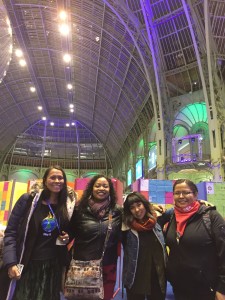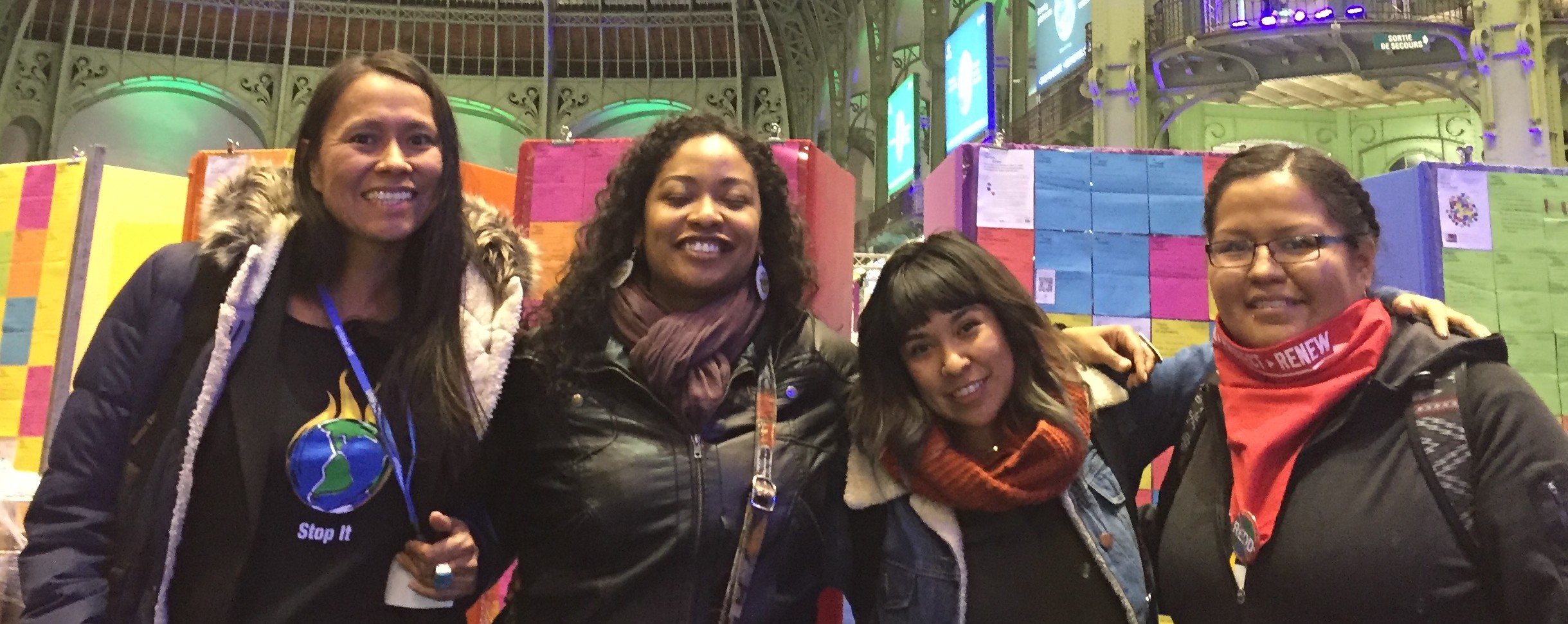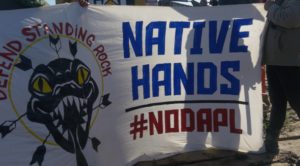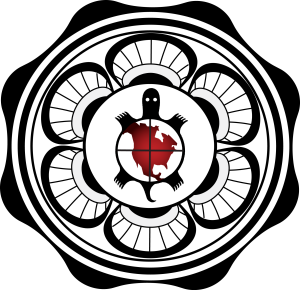Last month I had the honor and privilege of teaming up with the Indigenous Environmental Network at the COP21 climate negotiations in Paris to amplify the Indigenous Rising campaign and the voices and stories of the IEN delegation, which included over 20 Indigenous leaders, youth, artists, activists and educators from Turtle Island, also known as North America.
My role during the two weeks of COP21 was multifaceted: I was supporting IEN’s communications efforts, I was participating in direct actions shooting video and taking photos, and I was there as the Sustainability and Justice Fellow of Resource Media, strengthening relationships with front line communities. But most importantly, I was there as a young Diné and Tewa woman, whose ancestral home is on the frontlines of climate change and is also being compromised by coal and oil industries.
The Navajo Nation and New Mexico sit in a particularly vulnerable spot when it comes to climate change. Water is scarce. The Four Corners is a hot-spot for methane emissions, with the plume hovering over the region visible from space with infrared imaging. And growing seasons are become shorter. These are real impacts that are happening now. And they are made worse by the intense development by the oil and coal industries, which accelerate climate change and causes irreversible damage to these sacred lands.
These industries are not being held accountable. Instead they continue to extract, poison and turn a profit, which is distributed outside the local community. Despite knowledge of this, Navajo Nation leaders are still not taking bold, let alone any significant action, to address how the Diné can be resilient in the face of climate change.
Our elected leaders are failing us, which is why I showed up to COP21, to bring a perspective from this region and to report from Paris back to my community so we can begin to prepare for what’s next. And I wasn’t the only one. With me in Paris were Wahleah Johns, Jihan Gearon and Farrah Tso of the Black Mesa Water Coalition. While I was behind the scenes, these women were participating in COP21 in a very courageous way.
Whether it was inside the Le Bourget observing the official negotiations and talking to governments about the critical need to include indigenous rights in the Paris agreement, or participating in direct actions, or speaking on panels, these women, these leaders in their own right, did take a bold stand to protect the Diné people and our culture.
And the momentum these women created is carrying on. Last week, Jihan Gearon was named the “Navajo Warrior” in Grist’s “50 innovators, organizers, and visionaries who will lead us toward a more sustainable future, in the coming year (and beyond).” Jihan’s vision for 2016 is to identify the 18,000 homes in Navajo Nation that do not have electricity and to continue to work on bringing more solar solutions to these Diné communities.

Wahleah, with Jihan and Farrah by her side, will continue to develop the Black Mesa Water Coalition, with the aim of teaching young people about food sovereignty and what it means to have self determination as Indigenous People, which goes hand in hand with renewable energy. Wahleah also intends to work on educating tribal leaders about just and sustainable solutions.
The Paris agreement that came out of COP21 was less than stellar, to say the least. Indigenous rights – in fact all human rights – were excluded in the legally binding portion of the text, and left as only a mention in the preamble. What this tells me is that the true leaders, when it comes to solutions on climate change, are not those who furtively negotiate profit over human rights but rather those who are working, selflessly and relentlessly on the front lines. People like Jihan and Wahleah and the dedicated people of the Indigenous Rising Delegation. Not only do these leaders put the health and safety of their communities above our addiction to oil, but they also understand that we are in an unprecedented moment to protect Mother Earth so that our culture and identity as Indigenous People can thrive. Unlike the decision makers at COP21, these Indigenous leaders have a binding commitment to their ancestors and to future generations and there is no negotiating when it comes to protecting the places we call home.
COP21 ended in December, and while governments decide on what steps to take and how to cooperate with one another, Indigenous Rising delegates have developed Indigenous Climate Action, “an organization to ensure that First Nation communities, rights, culture and knowledge systems are fully recognized, protected and implemented into any and all climate change policies in Canada.”
This determination to act and to not lose momentum post-COP21 has shown me who the real United Nations on climate change are.
-Jade Begay:
Jade Begay of Tesuque Pueblo and Dinétah (Navajo Nation) is a filmmaker, Indigenous and women’s rights activist, and alum of Naropa’s Environmental Leadership MA program.




